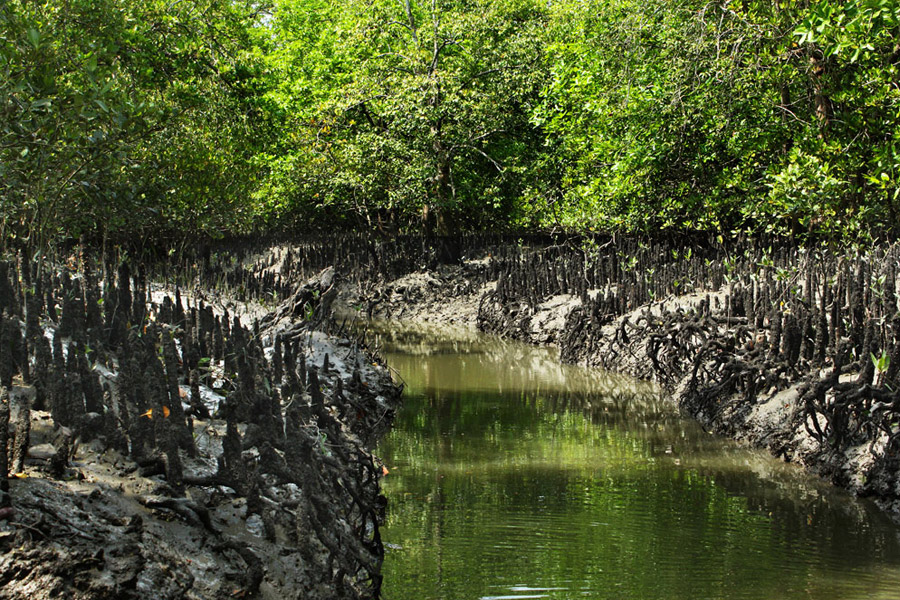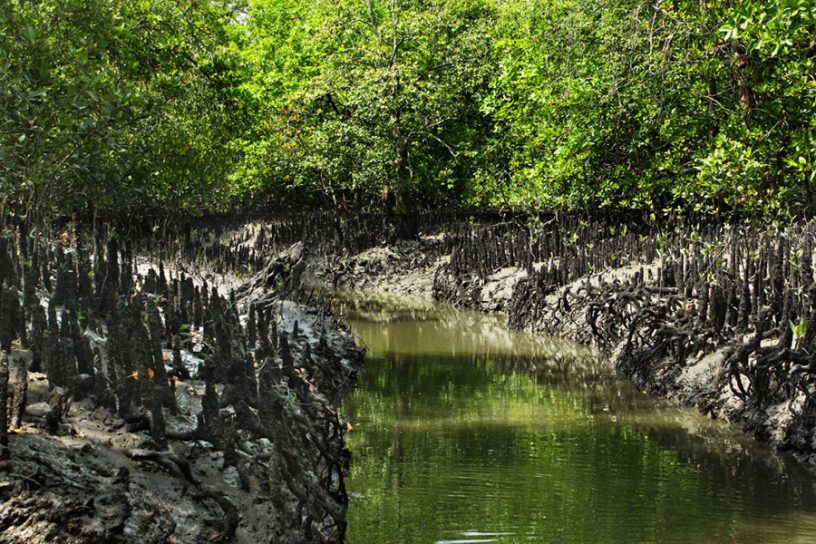
Increasing salinity indicate impact on mangrove diversity with salinity sensitive species limited to the eastern corner while salinity resilient species were dominating the western and central part of the Indian Sundarbans.
Authors
Abhiroop Chowdhury, Associate Professor, Jindal School of Environment & Sustainability, O.P. Jindal Global University, Sonipat, Haryana; Tagore Society for Rural Development, Kolkata, West Bengal, India.
A Naz, Tagore Society for Rural Development, Kolkata, West Bengal, India; Department of Environmental Science & Engineering, Indian Institute of Technology (Indian School of Mines), Dhanbad, Jharkhand, India.
S Bhattacharyya, Tagore Society for Rural Development, Kolkata, West Bengal, India.
P Sanyal, School of Oceanographic Studies, Jadavpur University, Kolkata, West Bengal, India; Ex-Field Director, Sundarban Tiger Reserve, Government of West Bengal, India.
Summary
Sundarban is the world’s largest transboundary contiguous mangrove ecosystem and home of the mangrove dwelling tigers. Sea level rise is destabilizing this ecosystem which is experiencing a rising salinity in surface and ground waters (shallow aquifer).
In this study ground water salinity was investigated across Sundarbans and surface water seasonal salinity changes has been investigated along East-west gradient in the region. Statistically significant seasonal as well as spatial variations has been observed in the surface water salinity pattern across this gradient.
The post monsoon average surface water salinity was 10.58 ppt while in pre-monsoon it was 27.31 ppt. Ground water salinity was lowest (0.95 ppt) in monsoon while highest in the pre-monsoon season (7.4 ppt).
There was a clear east-west gradient in the surface salinity distribution across the delta, indicating a source of fresh water in the eastern corner, bordering Bangladesh.
Increasing salinity indicate impact on mangrove diversity with salinity sensitive species (Heritiera fomes, Nypa fruticans) limited to the eastern corner while salinity resilient species (Avicennia marina and Phoenix paludosa) were dominating the western and central part of the Indian Sundarbans.
Mangrove associate Acanthus ilicifolius and Heliotropium currasavicum were abundant in the forests under anthropogenic disturbances.
Published in: IOP Conference Series: Earth and Environmental Science, 4th International Conference Marine Sciences (ICMS 2021) 24th-25th August 2021, Bogor, Indonesia.
To read the full article, please click here.


